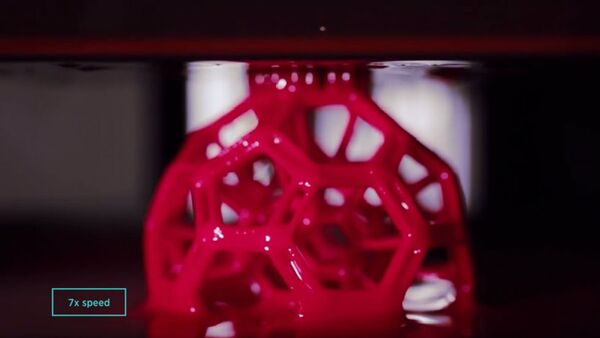Carbon3D has harnessed a new technology that’s sure to revolutionize 3D printing, and it’s known as “CLIP,” or Continuous Liquid Interface Production. The approach projects light through an oxygen-permeable window into a metal box-like apparatus. Light travels through the window, fusing with the oxygen and the resin to control its solidification. This allows for the continuous growth of the 3D object.
CLIP is not only the first process that uses tunable photochemistry, but also the first 3D printing approach that discards the traditional process in which layers are built up. CLIP-made objects are not only quicker to print (by 25 to 100 times as fast!), but are also much more durable, according to Phys.org.
Dr. Joseph M. DeSimone of the University of North Carolina at Chapel Hill co-invented the CLIP technology with fellow UNC professor Edward T. Samulski and Carbon 3D Chief Technology Officer Alex Ermoshkin.
"By rethinking the whole approach to 3D printing, and the chemistry and physics behind the process, we have developed a new technology that can create parts radically faster than traditional technologies by essentially 'growing' them in a pool of liquid," said DeSimone, who revealed the technology at a TED talk on March 16 in the opening session of the conference in Vancouver.
The CLIP innovation has potential for great advancements in fields such as medicine, aviation, the automotive industry, and even space travel.
— Joseph DeSimone (@Joseph_DeSimone) March 17, 2015
Of course, social media has been quick to take notice:
— Rob Story (@oceankidbilly) March 17, 2015
— John Hagel (@jhagel) March 17, 2015
— Dani Nofal (@dnofal) March 17, 2015
UNC-Chapel Hill and Carbon 3D have agreed to work as a team to change and better CLIP and find new compatible materials. The technique can already use elastomers, silicones, nylon-like materials, ceramics, and biodegradable materials.
"In addition to using new materials, CLIP can allow us to make stronger objects with unique geometries that other techniques cannot achieve, such as cardiac stents personally tailored to meet the needs of a specific patient," said DeSimone.
"Since CLIP facilitates 3D polymeric object fabrication in a matter of minutes instead of hours or days, it would not be impossible within coming years to enable personalized coronary stents, dental implants or prosthetics to be 3D printed on-demand in a medical setting."




